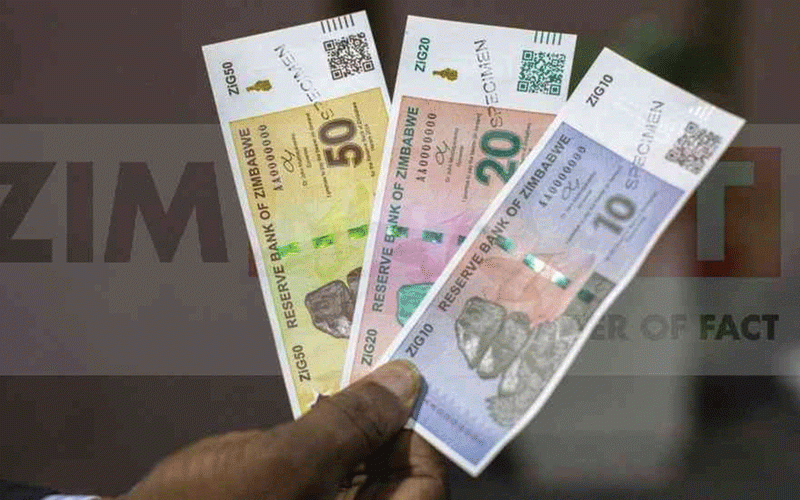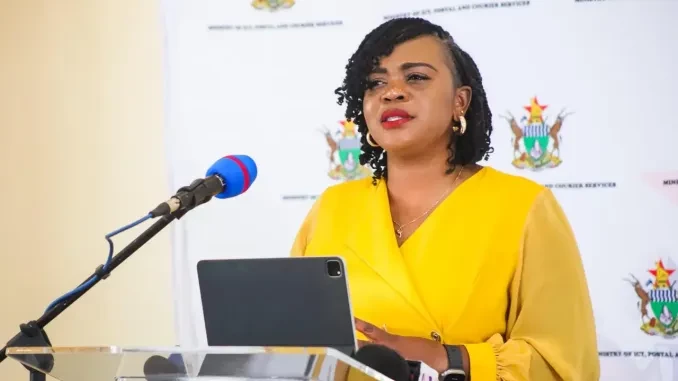
GOLD anchors Zimbabwe’s economy from a foreign receipts perspective.
In 2024, the country recorded a 36-tonne production, raking in US$2,5 billion, a record high. The outturn in gold helped stimulate total exports for the year to an all-time high.
From an overall picture, the growth in gold receipts averted a negative balance of payments position while improving forex availability.
The Reserve Bank of Zimbabwe (RBZ) reported that it accumulated gold reserves of about 2,7 tonnes by the end of the year, up from 1,5 tonnes in April 2024.
When the country introduced a new currency in April 2024, it said the Zimbabwe Gold (ZiG) currency would be anchored on gold reserves. Authorities said they had 1,5 tonnes of gold in the vaults at the Bank, while it kept another one tonne offshore.
The move to anchor the currency against gold is a new phenomenon in Zimbabwe. Hence, it generated a lot of interest. The country has struggled with currency stability since it went under United States and Western sanctions in the early 2000s.
The real interest was on whether the said backing existed, in fact, and whether the money supply levels were commensurate with the value of gold backing it.
This measure would, at a basic level, show if RBZ would be equipped enough to withstand any currency pressure that would arise. Our view was that the said reserves of 1,5 tonnes kept at the central bank were grossly inflated. We were of the view that the central bank had accumulated a total of only 0,7 tonnes since the country restarted the accumulation of reserves in October 2022.
- Rampaging inflation hits Old Mutual . . . giant slips to $9 billion loss after tax
- Monetary measures spur exchange rate stability: RBZ
- Zim deploys IMF windfall to horticulture
- Banker demands $21m from land developer
Keep Reading
The assumption was that reserves are kept only from royalties, which are estimated at 5% of produce and further reduced to 2,5%, given the 50% split between cash royalty and physical mineral asset payments.
We added a further 0,3 tonnes to arrive at a one-tonne total, the latter being royalties paid in physical form for other qualifying minerals.
In subsequent months, when the currency model was put to the test, it failed to hold. The value of the local unit faced significant pressure on the parallel market, leading to price distortion and other market disruptions, which affected the formal exchange market.
The RBZ failed to tap into the reserves to restore currency stability. The central bank had earlier said the levels of gold cover were at least two times the local liquidity levels and at an even higher three times cover after considering the forex cash reserves.
We expected that the reserves would come in handy, as is typical when currencies are under attack elsewhere in the world. But this did not happen.
In September, the currency was devalued against the dollar, and the forex market was reformed to a willing-buyer willing-seller (WBWS). This was an attempt to partially float the currency and move away from the fixed exchange rate.
Four months down the line, the exchange rate remains largely stable on the formal market, as would be expected from a controlled exchange rate. This market has experienced very marginal movement over the period.
What was not to be expected was the stabilisation of the parallel market for four months while the formal market was stable. The typical relationship between a controlled formal exchange rate and an unhinged parallel market is that the latter realise sharp losses when the former is tightly controlled.
The premium becomes huge. Could it be that the government was now intervening using gold reserves? We do not believe so. We think the government’s tightened monetary policy resulted in the outcome.
Government spending was significantly reduced compared to prior periods, thus resulting in reduced pressure. In the latest instance, BDO has published an audit for the gold reserves, and it said the RBZ had 2,7 tonnes within its vaults as of the end of December 2024.
This means it earned over 1,2 tonnes in just under nine months. This is staggering, considering that production for the nine months to December 2024 was 30 tonnes.
The royalty payments in real gold totalled 0,75 tonnes, and with an underwhelming PGMs production for the year, the other minerals contribution would take the total royalty payments in kind to one tonne, which is below the reported 1,2-tonne mark. These discrepancies between our estimates then and now, against RBZ’s reported numbers, could be explained in two ways. The RBZ could be rebuilding its reserves from outside royalties.
For gold, the RBZ is the sole buyer before value addition and onward selling to international markets. During the year, the country exported gold worth US$2,5 billion; it is possible that it could have instead not sold the full produce.
However, its ability to do this is limited to fiscal allocation to buy gold for keeps, which was not provided for in the 2024 national budget and its balance sheet.
As with currency, printing to buy gold would create excess local currency and possible inflation. The accumulation of gold reserves, as reported by the RBZ, is evidently outside of royalties, as the discrepancies are grossly higher.
This means the RBZ could have pursued other means, as highlighted above. What is important is how reliable those mechanisms of reserve accumulation become.
For example, funding the purchases through the issuance of new currency or short-term money market instruments creates a potential currency volatility crisis over the short to mid-term.
Outside of this, reserves can be accumulated through balance sheet leverage. Being a balance sheet item, the RBZ can ramp up gold reserves as at the reporting date and unwind in post periods depending on the form of accumulation.
This accumulation can be supported by the prepayment of royalties by some bigger producers of gold. At the end of the day, it matters most if the accumulated reserves are playing their monetary policy role.
Reserves are meant to help monetary authorities achieve their objective, primarily by aiding short and long-term currency stability. Over the long term, reserve accumulation helps achieve an import cover, which allows for currency stabilisation if forex inflows are outpaced by outflows, creating a forex squeeze.
If caught without cover, the country suffers massive currency devaluation and experiences volatility. So, when evaluating the effectiveness of the current reserves accumulation strategy by the RBZ, the two factors above are worth noting.
A quick assessment of the short run shows that RBZ has failed to utilise the said reserves to defend the currency when it was under attack.
In September 2024, the ZiG was massively devalued against the US dollar, shedding about half of its value. In this instance, the Bank should have utilised its reserves to re-equilibrate the market.
There are other angles which one may look at, but the short-term payoffs were significant and potentially hurt the long-term performance of the currency.
It, therefore, matters less what level of gold reserves have been accumulated if those reserves are not committed in the short term to defend the currency’s value.
This is particularly more important in the case of Zimbabwe because gold reserves were the basis against, which the local currency was valued.
Gold forward, while this figure will be important to watch, its impact on currency valuation is no longer that significant. The RBZ has not opted to use it as a short-term tool to stabilise the currency and, therefore, cease to be a factor.
However, over the longer term, a consistent gradual accumulation of reserves is a key anchor for currency stability. Zimbabwe has long struggled with currency stability, and the strain is even pronounced without any import cover.
A higher import cover will allow the RBZ to smoothen demand and supply of foreign currency (forex) over the long term and thus diminish chances of currency volatility.
The sincerity of reserves accumulated remains a key question, but the government would need to stay the course while also being flexible in its approach by intervening in the markets over the short term.
- Equity Axis is a financial media firm offering business intelligence, economic and equity research. The article was first published in its latest weekly, The Axis.











